It’s one simple concept: Learn the fundamental principles of photography, and learn them well.
Those skills cannot be traded for megapixels, and will help you get the most out of any hardware in which you do decide to eventually invest.
The problem with more pixels…
You know what’s worse than 24 million poorly exposed, out of focus, diffracted, useless pixels that need “fixing” on a computer screen?
That’s right – over 100 million poorly exposed, out of focus, diffracted, useless pixels that need “fixing” on a computer screen.
Such is the dilemma I’ve found myself in when responding to the many, many, people who have asked for my thoughts on the latest high-resolution releases from the powerhouses of consumer cameras – Fuji, Sony, Canon, Nikon, now that they’re all back in the megapixel race once again – while forgetting two key things:
- It’s not about pixel count, it’s about pixel quality.
- Your customers need to be able to get the best use out of these cameras.
The Fuji challenge.
Many of those asking the question have been prompted by Fuji’s release of their latest “large format” sensor (ahem – that’s a lie, more on that later!) in the company’s flagship GFX100 camera. As a result, I can’t really go much further in this post without touching on this specific piece of hardware.
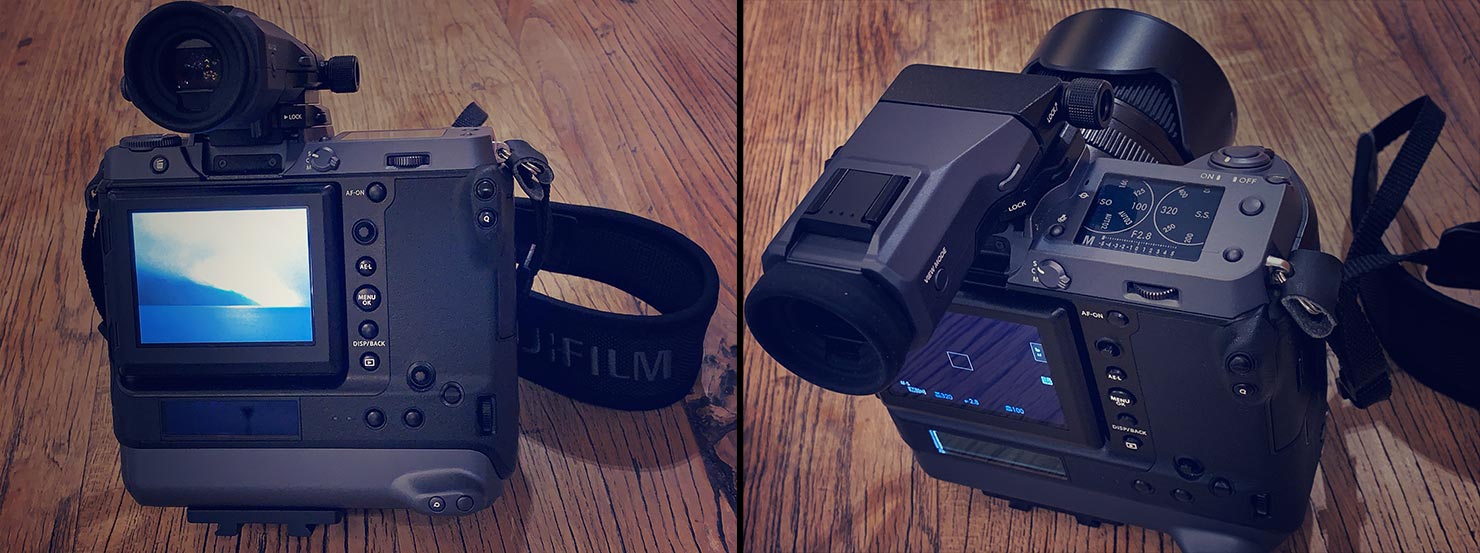
Having had the opportunity to play with one a couple of months back, and again whilst shooting in New Zealand a few weeks ago, I have to say, the GFX 100 is a very capable camera in certain situations. For street photography, those wanting high resolution output will be extremely happy with what it can do.
I fear, however, that the focus (pun intended) has been warped by the industry to ensure people forget those two important points above, while relying purely on the marketing messages they want to push about resolution alone.
My path to ultra-high resolution.
It was around 6 years ago now that I switched from my 35mm Canon DSLR kit to Full-Frame Medium Format, opting to head down the Phase One route at the time with their stunning new IQ280 80-megapixel digital back.
It was a CCD sensor on a difficult to use, rebadged, Mamiya 645DF+ setup which got very noisy when hot (not helped by the fact that it heated itself up!) But all that paled into insignificance in comparison to the image quality I was able to achieve with my new kit.
Note: I said image quality, not image size.
So, let’s get the elephant in the room out of the way before going any further – YES, a higher megapixel count does help to print BIG. And I print my images big. We often measure prints in feet, not inches, and for that I wanted the highest possible resolution available at the time – but with the best possible quality images too.
My switch to medium format gave me that. I went from 80 megapixels in the IQ280, to 101 megapixels in the IQ3/100, to even better colour rendition with the IQ3/100 Trichromatic, and most recently to the stunning IQ4 150MP – 151 megapixel medium format back.
With each upgrade, I gained resolution, but most importantly I gained even better image quality and enhanced usability from the camera itself as we moved to the XF / Infinity Platform over those years. Indeed, a lot of the changes and improvements I’ve seen in my medium format system have been around the way the platform integrates in the form of a complete end-to-end workflow with software, hardware and lenses that just work perfectly together.
Further, each sensor I’ve ever owned from Phase One has been special in one very specific way: It’s as near to true full-frame medium format image size as possible (the “old” 120 roll of 6×4.5 film).
More pixels = Better sensors? No.
Why is all that important? Well, going back to our “quality” of image challenge – it’s all about how much light each pixel can receive, interpret and record. Bigger pixels, generally, mean less noise, higher dynamic range, and better resolving ability for those high definition lenses. Make the sensor smaller, squeeze more tiny pixels in, and you’ll start to see the image quality drop off a cliff.

With a bigger overall sensor size, along with larger pixels, we give the camera a much better chance of capturing more light and producing cleaner images with that distinctive “look” that only medium format can deliver, time and time again.
Indeed, if we compare the pixel size of modern digital cameras in microns (µm), the numbers can be quite interesting:
- Canon EOS 5D mk II – 6.4µm (so 40.96 µm²)
- Nikon D850 – 4.34µm (so 18.84 µm²)
- Sony A7R4 – 3.76µm (so 14.14 µm²)
- Fuji GFX 100 – 3.76µm (so 14.14 µm²)
- Phase One IQ4 100MP Trichromatic – 4.6µm (so 21.16 µm²)
- Phase One IQ4 150MP – 3.76µm (so 14.14 µm²)
Bigger pixels = Better sensors? Yes.
Now of course, as sensor technology has evolved, we’re able to put more pixels in the same physical area as those of years gone by. Including the trusty old Canon 5D mkII in this comparison is a simple way of demonstrating that – at only 22.3 megapixels, it simply wouldn’t “cut it” in today’s world of high resolution expectations – but what’s interesting to me is how much more the manufacturers are all trying to squeeze into these tiny pieces of silicon.
Let’s use those numbers above to look at the 2019 Fuji GFX 100 and compare it to the 2018 Phase One IQ4 100MP Trichromatic (the closest technical comparison we can make). Sure, they both deliver just over 100 million dots per image, but every single pixel on the Phase One medium format sensor has a 50% larger area than those embedded within the Fuji offering – as a result of its full frame size.
More pixels = smaller pixels = more heat = more noise = less quality light being captured in its raw form.
To go even further – there’s a reason some relatively low-resolution cameras, to this day, are still revered as the “holy grail” for certain shooting situations – especially in low light.
Take, for example, the humble Sony A7S II. With its ridiculously underwhelming 12.2 million pixel count on a full frame 35mm sensor, you could be forgiven for casting this little box of tricks by the side of the road – but look at how big each of those glorious pixels actually are: 8.4µm (so, 70 µm²) per pixel.
That makes each pixel 500% larger in area than the “latest and greatest” Fuji 102 megapixel beast, or even the Phase One 150MP medium format back. Yes, a whole five times bigger.
Why is that important? Well, as we’ve covered, bigger pixels = more light hitting each one, less noise, cleaner shots. In fact, the sensor on that camera is so good that it can capture the Northern Lights in real-time video (not time-lapse!) with no discernible noise.
(Let’s just hope Sony don’t ruin that capability with the release of the A7S III!)
Enter, stage left, Xiaomi and Samsung…
So where does that leave us in terms of the revitalised race to have the highest megapixel count on the planet? Well, in a pretty sorry state, really. Let’s look at one very recent announcement by Samsung and Xiaomi – the mobile phone manufacturer:

That’s right – 108 million pixels of phone camera “greatness”.
And what if we look at the size of those pixels? Well, they’re 0.8µm (so 0.64 µm²) – which is 97% smaller (no, not a typo!) than each of the pixels in Phase One’s IQ4 100MP Trichromatic sensor.
That’s right, each pixel is just 3-5% of the size of a pixel on any other “proper” digital camera.
Granted, I’m sure the guys at Samsung (and Xiaomi) are going to do some clever things to remove the challenges which come about from that pixel pitch including some serious noise reduction code when shooting in low light. I’m also sure the image quality will be good for a camera phone, but we’ve stopped talking about overall performance of a camera – opting instead to talk about the one thing I thought the industry had previously gotten clear of – “The Megapixel P***ing Contest of Ultimate Resolutions”.
As I said before, resolution IS important to us as photographers; especially when our customers are being bombarded by “retina” screens and 4k, 6k, 8k, 12k TV displays – but it’s no good if the camera can’t also capture the subtleties in shadows, the highest peaks of bright light, the wonderful focus fall-off as a shallow depth of field keeps our eyes glued to the subject – all of those things are rapidly being pushed to the bottom of the specification pile.
“Comparing” 151 million pixels to 24…
In the interests of fairness, let’s do what everyone else is currently doing and take a detailed look at resolution – and just like those others, we’ll do a completely unfair test. I’ve taken “Sin City” – my shot of Las Vegas from last year, captured at 151 megapixels….

And then licensed a stock image from a similar viewpoint that was captured on an extremely capable, but lower pixel count (24.3 megapixels to be exact), full frame Nikon D750:
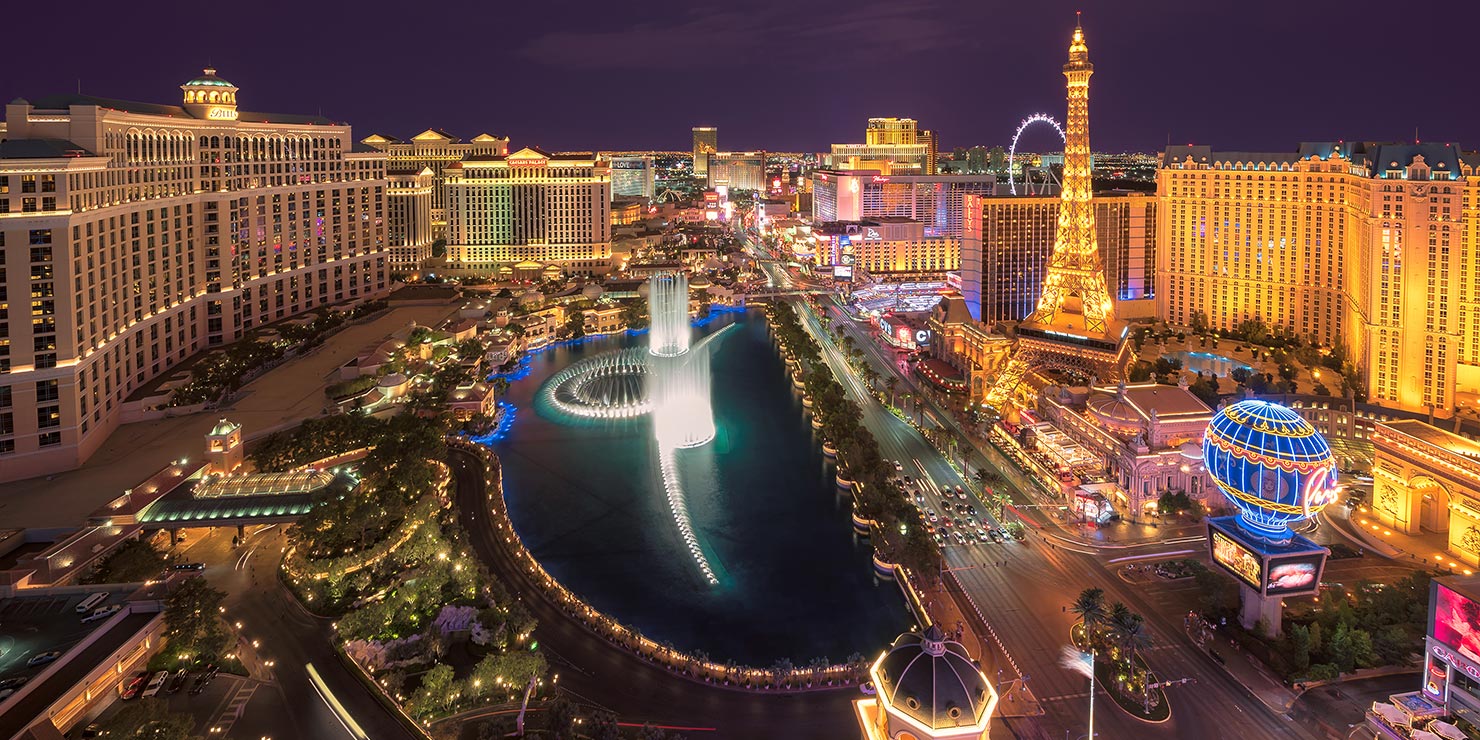
They’re different, of course, but while the stock image certainly has more lens distortion, at this screen resolution they both look pretty sharp.
So let’s zoom in with some 50% crops (we have to do them at 50% due to the way retina displays render out the images in double pixels) – beginning with the Steak House at Bellagio:

Next, the CVS pharmacy on the strip:

Then how about a section from miles away in the distance (bearing in mind these were taken on wide lenses):

So there we have it! It’s a proven fact!
A $50,000+ Medium Format digital back definitely produces sharper, higher resolution, crisper, more detailed images than a $1,700 prosumer DSLR.
Wow.
I don’t know about you, but those results were a real shock to me……..
Only, they quite obviously weren’t!
Can 100+ million pixels capture more detail? Yes, of course it can.
Of course the medium format Phase One was going to beat a 35mm DSLR in terms of physical resolution and clarity – and I for one would be extremely annoyed if it didn’t!
But that’s not all we’re looking at here. With the IQ4 images we’re also looking at an image with a much broader dynamic range – smoother gradients and subtle changes in tones, and much more potential for highlight and shadow recovery that lower-spec’d cameras simply can’t deliver.
So it’s a statement of fact that the new breed of mirrorless and DSLR manufacturers are making – more megapixels = more detail. And on the surface of that claim alone, I agree. What started with Canon’s woeful 5DS/r and its horrendous 50 megapixel sensor, has now become the de-facto expectation for all new DSLRs out there – anything less than 50 million pixels is “old technology”.
Sony have launched their 61 megapixel A7R4; Canon are rumoured to be working on an 80mp monster (again, inside a 35mm frame size) to be released in the coming month; Nikon are making plans for 60+mp bodies in their mirrorless Z range too.
What worries me slightly more, however, is the insistence of Fuji in particular to start calling their new system “medium format” (or even, in some marketing material I’ve seen from them, a “large format sensor”). Fundamentally, this is untrue.
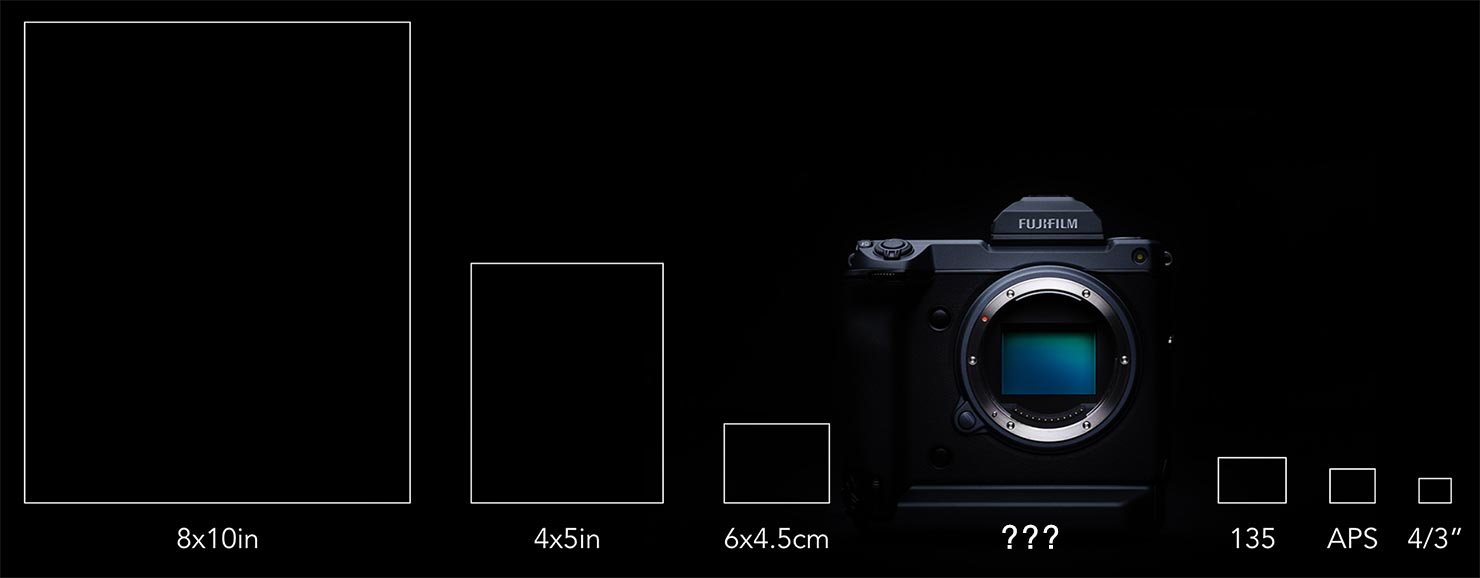
Funnily enough, in their own marketing diagram online (above, with my added “???”s underneath!), they shy away from the claim – instead offering it up as “something in-between” – but the press releases have been unequivocal, and frankly, misleading.
If it were medium format, it would have a frame area of over 20cm² – it does not.
Indeed, if it were “large format” (as per their marketing material and social media posts), it would be sporting a sensor that’s around 4″ x 5″ (or maybe even 8″ x 10″). It’s not (and I don’t know of any digital camera that currently does).
So is the Fuji GFX 100 really “medium format”? No.
And neither was the GFX 50/50S. What they both ARE, however, are “a bit bigger than 35mm” sensor cameras – and to be absolutely fair, very good ones at that.
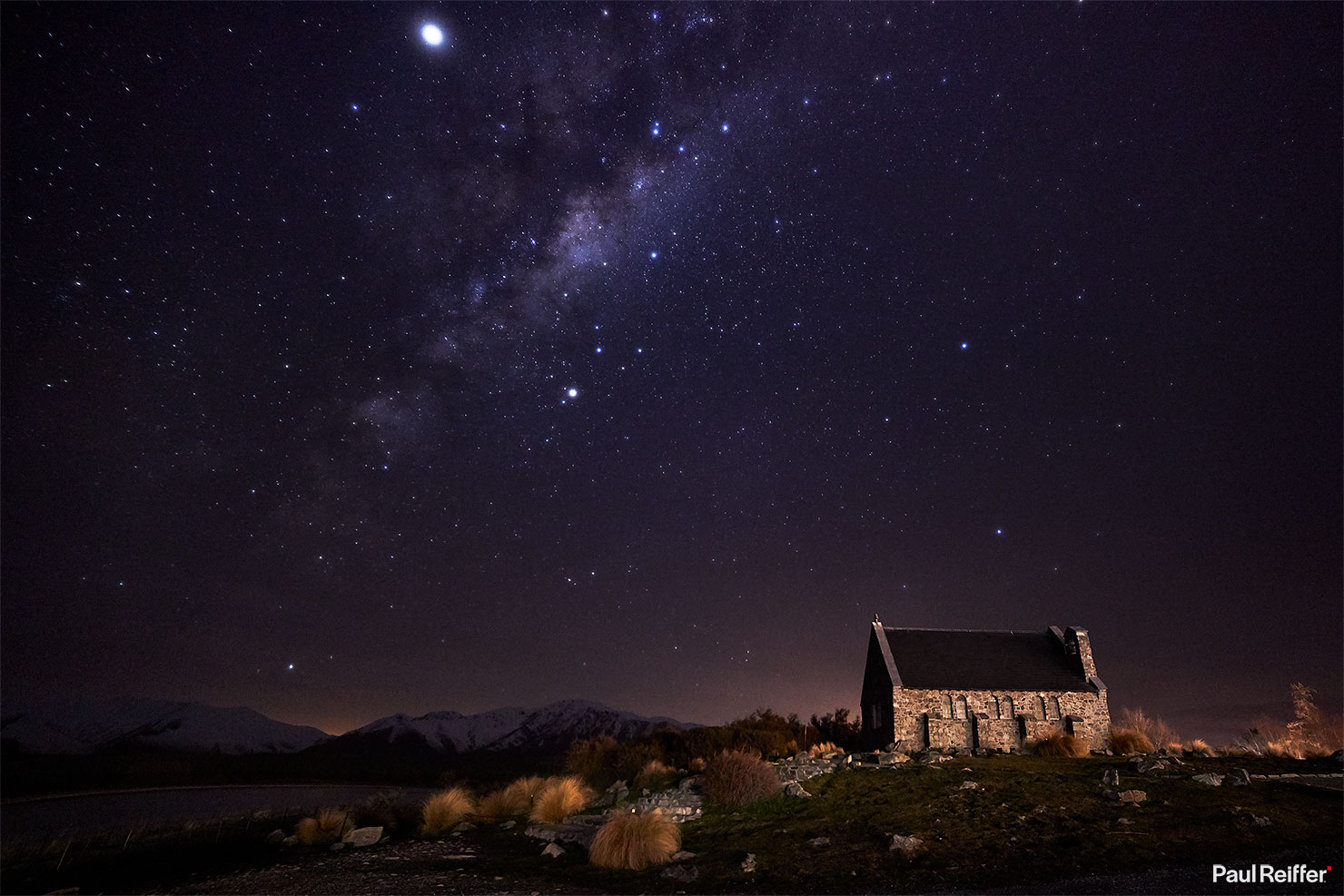
Comparing its high-ISO performance to this shot (above) that I took with a Canon EOS R in New Zealand, it did absolutely great, except for the fact there isn’t (currently) a suitable lens out there that can shoot wide enough open, with a wide enough field of view, to get the entire scene in play.
The Fuji GFX 100 in the field.
So what about the other aspects of Fuji’s promise?
Testing its IBIS (or In-Body Image Stabilisation) showed that it really wasn’t up to the claim of “5-stops” of improvement, maybe 1 or 2 – but still, something that a modular medium format system can’t offer right now, so a definite win for handheld shooters.
That said, walking around with the camera in your hand can’t help but demonstrate how plasticky the body feels – the IBIS cage physically rattling around as you move, to the sound not too dissimilar to a 3-year old child’s toy being shaken.
Then there’s the controls – for all the fancy feedback on the OLED displays, there is no dedicated shutter speed wheel/dial, no quick ISO dial, no exposure compensation wheel or buttons available to make these changes quickly on the camera.
The autofocus system is phenomenal – genuinely, hand-on-heart, fantastic. From its amazing Eye-AF, to the ability to get it right in low light 95% of the time, this machine has impressed me to no end. But the effort needed to override the intelligence in the system when you want to be specific to a certain point for that “one shot” is phenomenal too, and not in a good way. It’s almost like it’s trying to do so much for you, it assumes you’d never want to take creative control yourself.
And then finally the menu system – which is as if they took the worst parts of Sony’s impossible maze of screens, and tried to make them harder to use. Try formatting a card – a simple task, hidden deep within an obscure “user settings” menu a few screens down.
Let’s not forget – while the camera is certainly cheaper than a “real” digital medium format camera system, it’s not a cheap camera! At $10,000 for the body alone, this is still a chunky investment, and for that price, I don’t believe for a second that the build quality and usability is up to scratch in this (first) version.
Enough of the Fuji-bashing!
So where does that leave us with the wider question – will a higher resolution camera make my photographs any better?
The short and simple answer is “no”.
So far, I’ve focused on the technical aspects of this question – the literal statement, “is a 100 megapixel camera better?” The answer to that, as I hope you now understand, is “it depends”. But that’s not what concerns me the most here – what worries me more is the self-awareness of some photographers as to their own current abilities as a result of these heavy marketing messages.
Don’t get me wrong – every now and then, I have a nightmare shoot. It happens to us all.
I’ve accidentally dialled in the wrong settings; my composition has been a little out; my focus point was just off; my timing was wrong – all these things can drastically affect the output from any camera. In each case, I know what I’ve done, and understand the change I need to make to correct it.
But no, what I’m seeing as a result of the intense marketing campaigns by Sony, Fuji, et al, is a message that says “don’t worry about how good you are – this camera will make every picture great, simply because of it’s resolution!”.
Spoiler alert: It doesn’t.
Bigger images = Bigger mistakes.
If you were taking bad photographs on a low resolution camera, you’ll be taking worse photographs on a high one. If your 30 million pixel shot was even just slightly out of focus (and almost impossible to recognise at that resolution), then see what happens with the same amount of error at 100, or 151 megapixels instead:
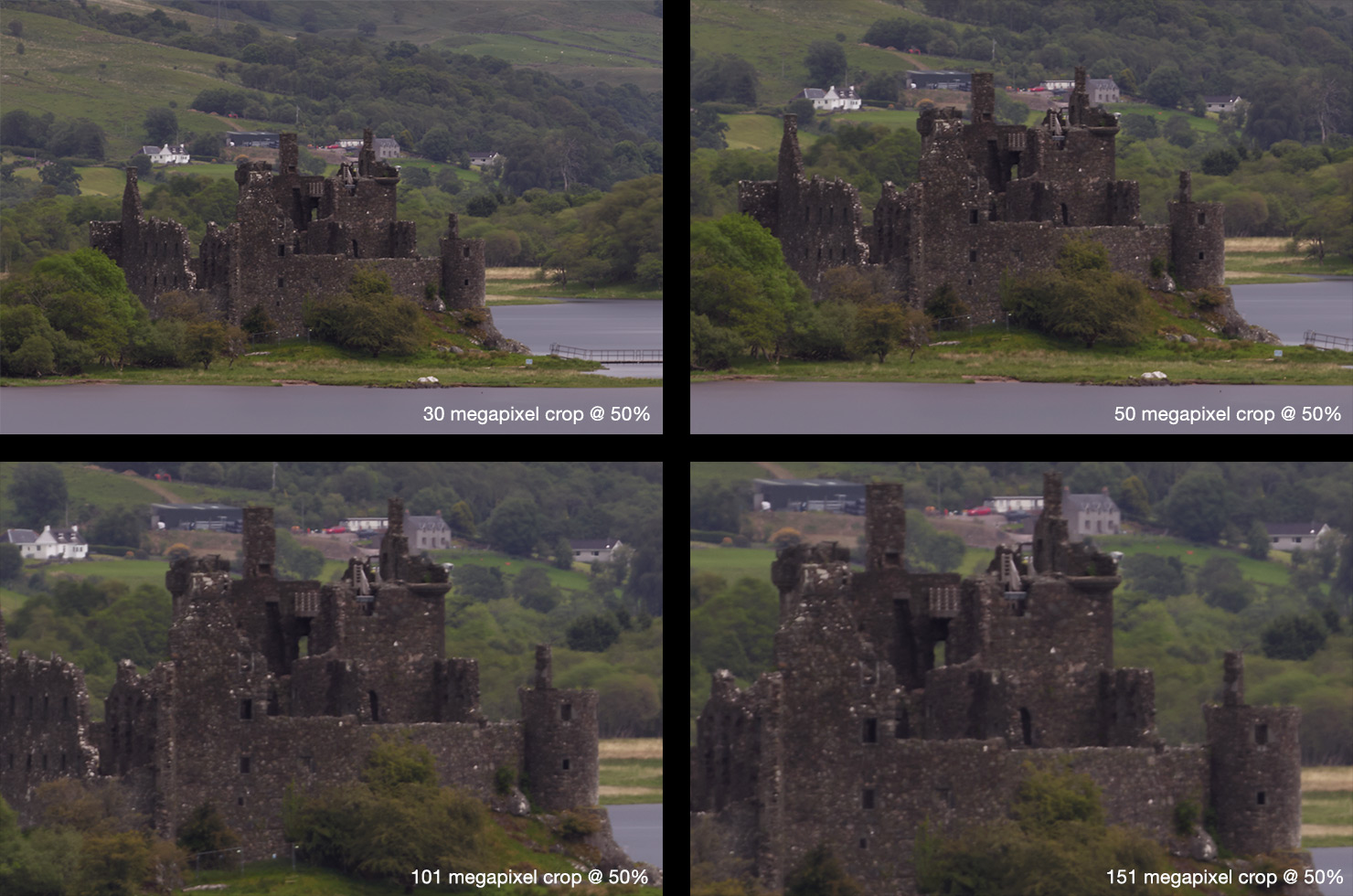
Take the same image correctly, and it’s as sharp as hell all the way through…

So I’m now seeing people out shooting with their brand new GFX50, GFX100, even going back to those with the Sony A7RIII, Canon EOS 5DSr, making landscape images with f/22 or f/32 apertures (which, for clarification, is FINE if you know why you’re doing it in some situations!) without a clue of why their images aren’t sharp.
I’m seeing people get frustrated that the highlights are blown out on their $5,000, $7,000, $10,000 camera – “it should be able to handle that!” – without understanding dynamic range, or the tools that are available to help balance the exposure in a given scene.
I’m watching the disappointment on the faces of these camera owners as they realise that their faults at 24 megapixels are just magnified at 100+.
Get the focus slightly wrong? We’ll see it.
Select the wrong aperture for the depth of field you need? There’s no hiding.
Use an excessively high ISO to “rescue” a shot? That’s going to be the first thing people notice.
Choose a poor composition? Well, no amount of megapixels is going to fix that, although it does allow a get-out-of-jail if you choose to fix it by cropping!
Getting the best out of the kit you already have.
There’s a huge variety of cameras out there, and in the right hands, with the right skills – they can ALL do amazing things. Indeed, the humble iPhone is capable of creating some truly great images. By way of example, here’s a handheld 9 second long-exposure shot, taken with my iPhone 2 weeks ago in New Zealand:
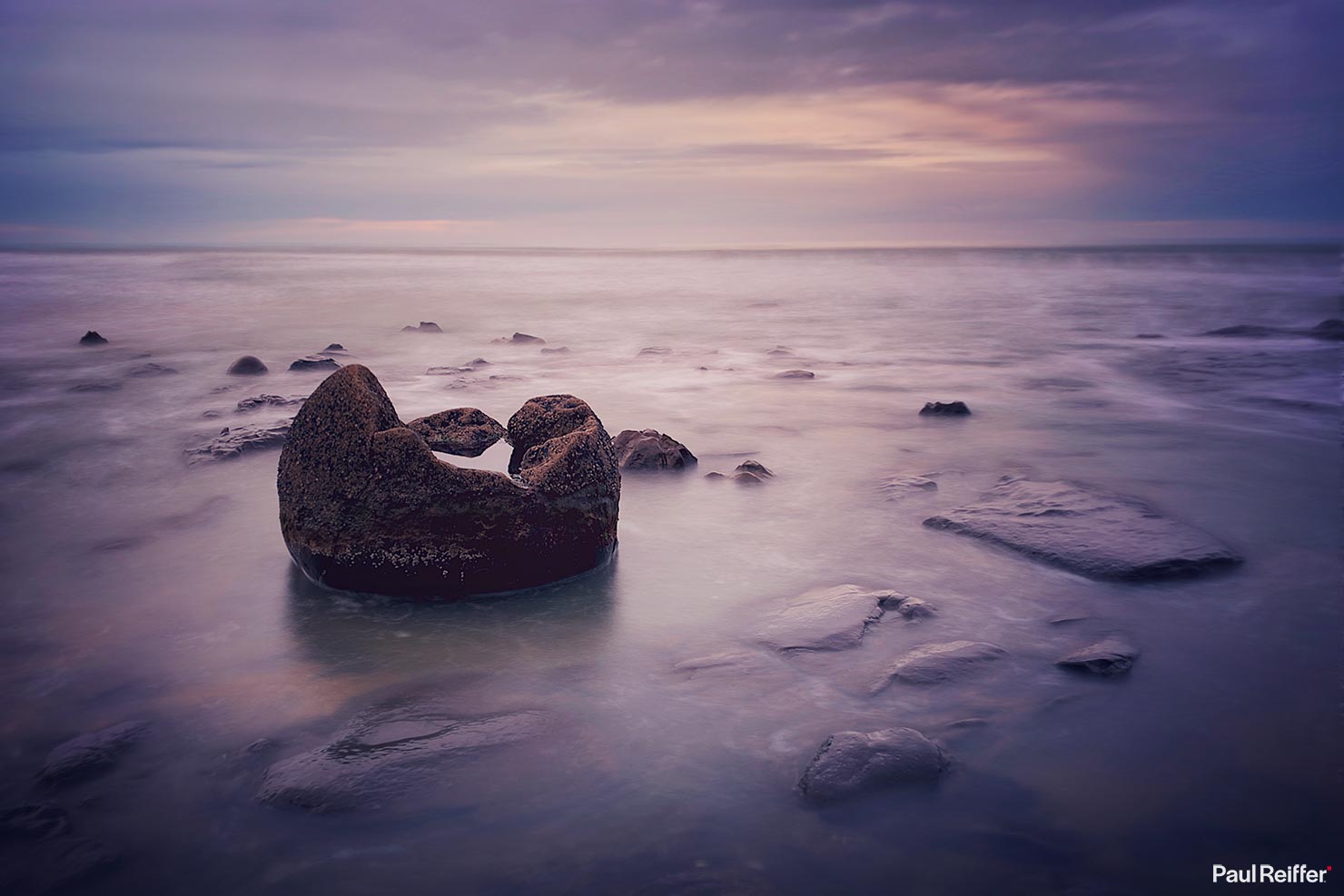
It’s correctly exposed, it’s sharp, it’s composed how I wanted it – and yes, it would be even better had I used my Phase One kit to capture it. But equally, if any of those elements had been wrong to begin with, all the high resolution equivalent would have delivered is even more of that same, previously small, error.
So what WILL make our photography better?
Practice. Practice, practice, practice – AFTER understanding the key principles of how light works; how exposures actually happen; what it takes to get the best from long exposures; how aperture, shutter speed and ISO are all inter-related; how lens settings affect your output – and how to get the best out of the camera you already own.
Then, once you’ve genuinely outgrown the camera you have – then (and only then) is the time where you might be able to justify the “need” to spend more money.
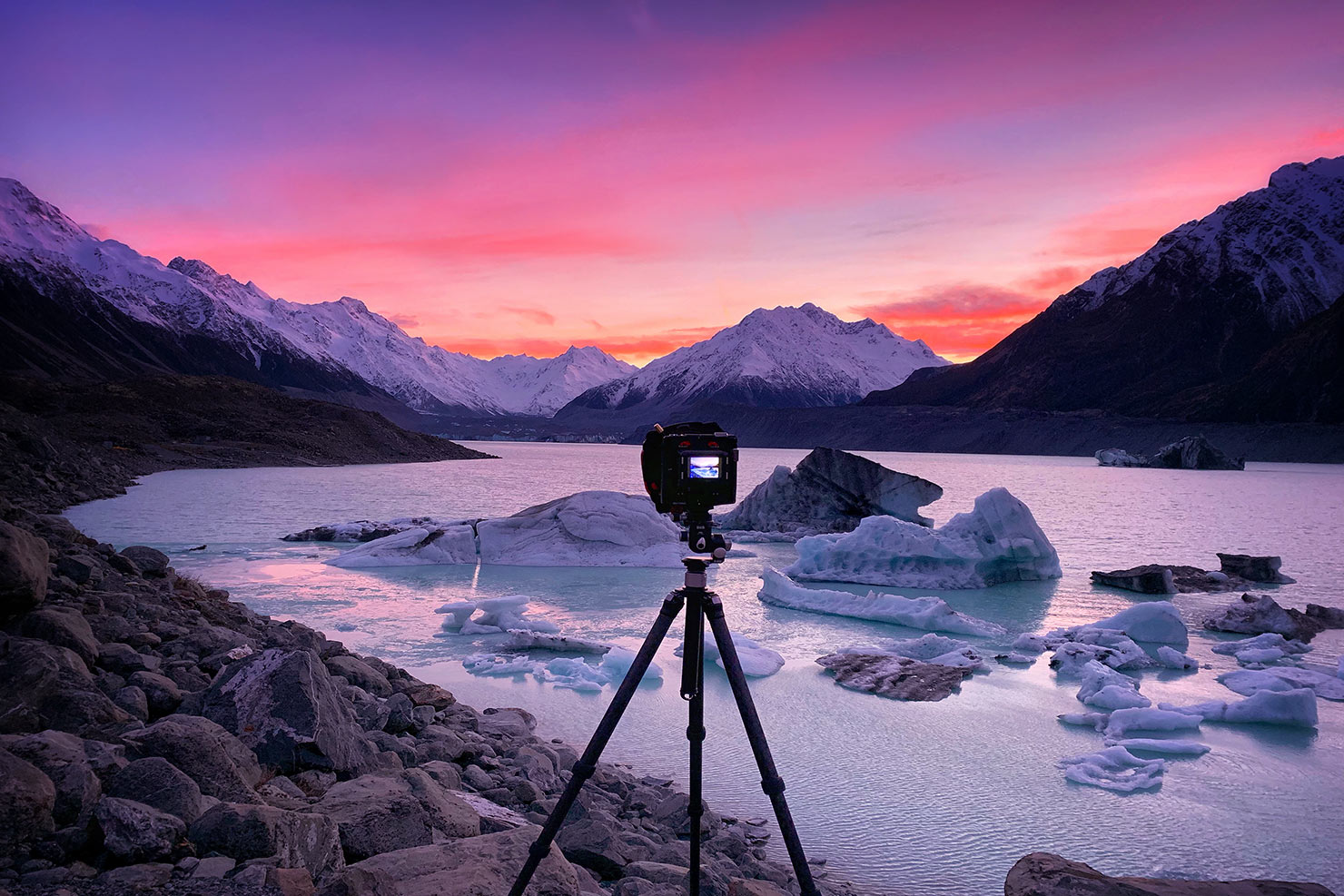
Summary.
All of that, in a nutshell, is my extremely long version of a very simple answer to a closed question:
“Will my new 100 megapixel camera make me a better photographer?”
No. No, it won’t.
Only YOU can make you a better photographer. Stop worrying about the equipment in your hand, and start focusing on the images you produce from whatever kit you have.
